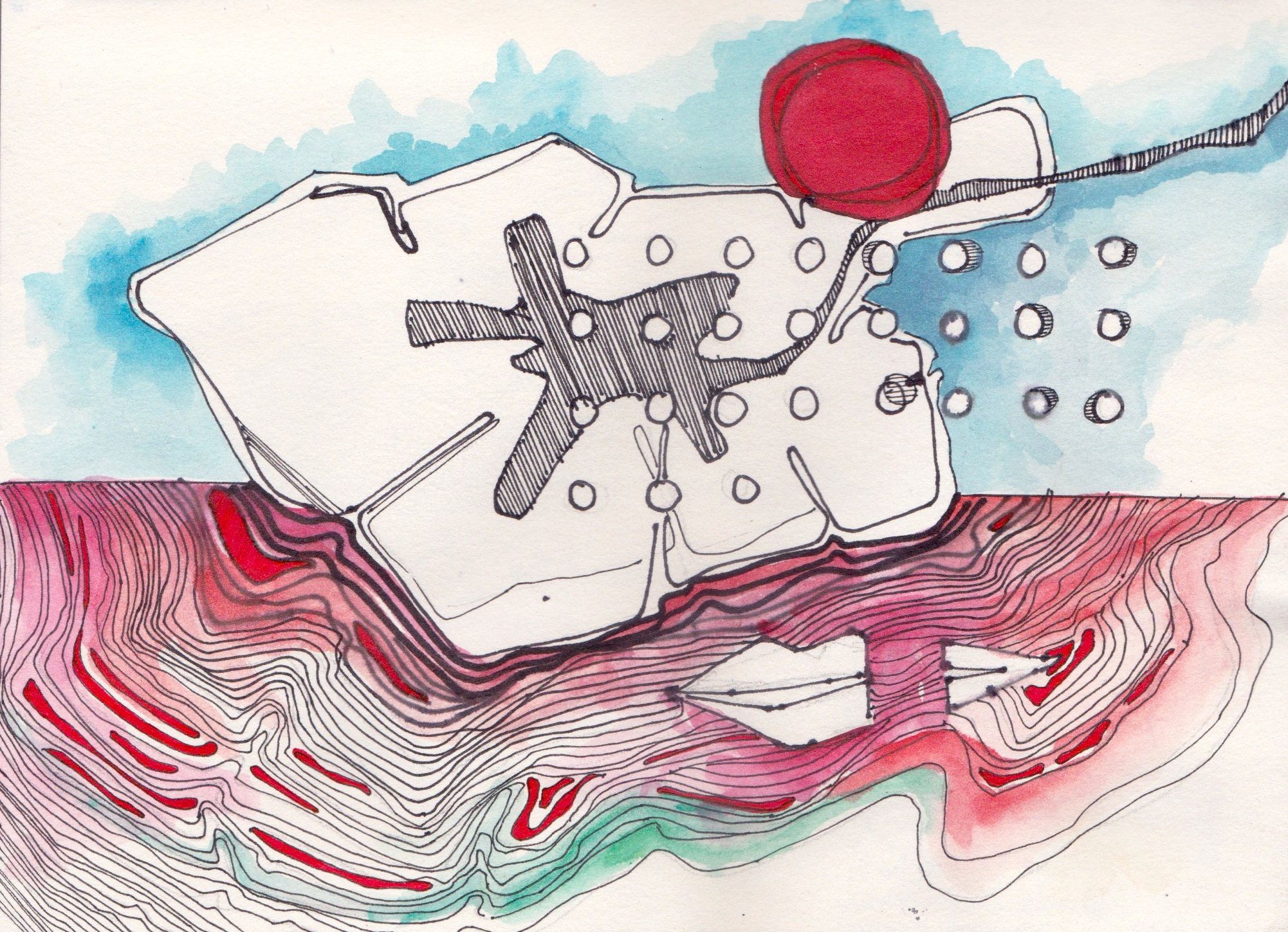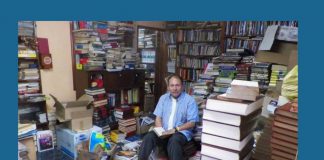For our “X Questions With” series, we’re speaking with talented individuals from around the world who have inspired us with their creativity and passion. If you have a story to tell or someone you’d like to see profiled, let us know in the comments or on Facebook, Instagram or Twitter!
Today, we’re chatting with Kanak, an architect and urban planner with a passion for art. Inspired by her work with different cities and people, Kanak creates works of art both micro and enormous in scale. To see more from Kanak, check her out on Instagram – @artdhatura for her art and @kanakonatrip for photography.

1) Please tell us a little about yourself
Name: Kanak
Place: India
Age: 30
Places Lived and Visited: Lived in a couple of cities in India – Darbhanga, Vadodara, Mumbai, Noida and travelled some more across the country. I did my Masters in Urban Design in the UK with the Glasgow School of Art. Have worked for the past year in Doha, Qatar. Travelled to a couple of other cities – London, Jakarta, Bali, Abu Dhabi, Dubai.
I grew up in two cities actually; was from Darbhanga, in eastern India and grew up in the western state of Gujarat. One is high on idealism and the second on practicality. I borrow heavily from the cities, the city life – old/new/organic/planned, how I feel when I see these places and people I meet in my work and art. Currently waiting to figure where I go next.
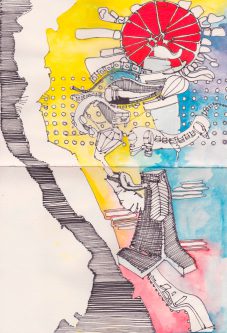
Other Passions: Apart from cities and my work, it would be art, photography next, then books, visiting art galleries, exhibitions, film festivals and local markets of any kind, and food. I keep growing my interests in ways that I am always trying to pick new things to learn in terms of different art media or just an entirely new domain. Analogue photography or a course or cooking or bits of new languages from friends I make.
I also studied as electives Short Film–Making and Black & White Analogue Photography in Glasgow with the Glasgow School of Art.
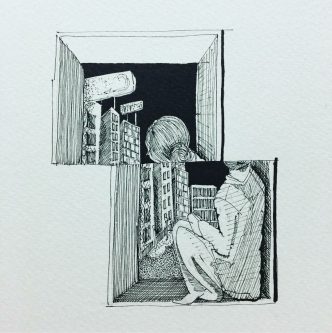
Education/Training: Trained in Architecture & Urban Design
Occupation: Architect & Urban Designer
Favourite Quote: It’s a verse actually…
“The children sing in far Japan,
The children sing in Spain;
The organ with the organ man
Is singing in the rain.”
I don’t know when I heard this first but I have been writing this on my diaries since I was a kid, ever since I can remember. It makes me feel that there is so much life in cities that I am still to see. And they are kind of calling for me.
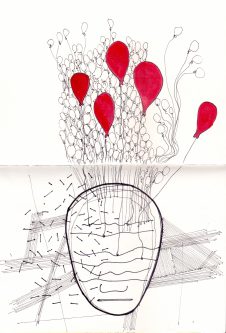
2) We saw on Instagram that you are using our Micro-sized journals to create fabulous watercolour works. What inspired you to pick such a small medium to create in?
I paint daily, almost like journaling. So I keep buying sketchbooks from places I visit – just picking up things that catch my eye. One of my trips out of Doha, I saw the tiny Paperblanks in the Museum of Islamic Art Airport Shop. Initially I was intrigued with the all grey tones in the art work on the cover. I thought the artwork was pretty cool and also the size. Recently while travelling, I started using the Micro-sized Paperblanks. They are actually amazing to work on. They are super tiny, and they surprisingly hold watercolours really well. The pages bring out very nice under textures with the colours.
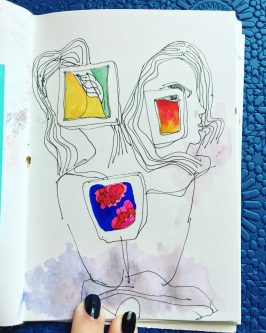
3) How did you get into watercolours?
I have been into art since I was a kid. I have absolutely no recollection of when I first started with watercolours, mostly in school, but for a long time later in university years I was more into canvases and oil paints. Watercolours I used more for architectural rendering and concept sketches. Around 2010, the architecture course work became too much for bigger pieces so I moved to creating smaller watercolours on the back of my discarded sheets. So I would have one or two canvases going on and the watercolours for smaller sketch journals for day to day stuff. Feasibility to carry around and the instantness of expression.
4) You’ve also posted linocut prints. Is there a medium or style you prefer?
Linocut has been a new medium for me. I have just taken up trying to self-learn printing over the past year and am enjoying it a lot. My favourite medium is oil paints though, on huge canvases. The forcefulness with which you can pour yourself into the oil medium or at a larger scale brings a very strong emotion to me. Unfortunately, with my moving around a lot, I haven’t really been able to indulge it much.
In terms of style, I have seen my work range typically into abstract, self-portraits sort of and a line-art style called Mithila/Madhubani painting, which is actually a folk-art style from my native place.
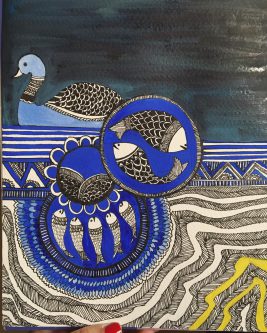
5) Do you have a subject matter that you are especially drawn to work with?
Conversations. And those are basically around cities and people. I’m with a lot of architects and so conversations centre a lot on cultures, spaces and how human behaviour gets shaped. Also a lot of the people around me are avid travellers, so they share stories. Cities and customs they grew up in, they travelled to, their memories and incidents. Sometimes we compare cultures or seek similar words in our languages.
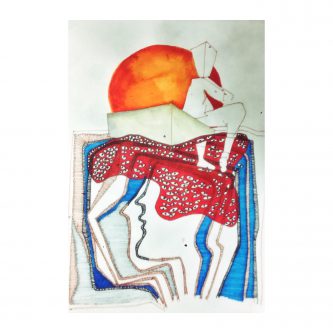
These cities, people, conversations, relationships between the “searching” and “missing of home,” they have formed the topic of my sketchbooks for the past 7 years. My work today, architectural and art, both are a derivation of my relationship and involvement with cities. A lot of my art is resultant of drifting, I feel. It’s kind of a daily therapy. For the last year, I have regularly painted almost every morning for a half-hour or so before going off to work. It refreshes me. I observe or experience something, I paint and then write about it. I think both the painting and writing together complete an incident.
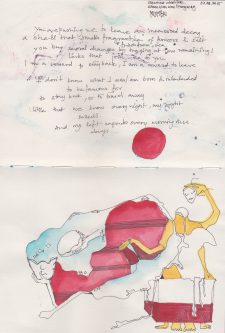
Sometimes I do what I call migraine paintings – when I have a headache that I just kind get rid of, I do self-portraits.
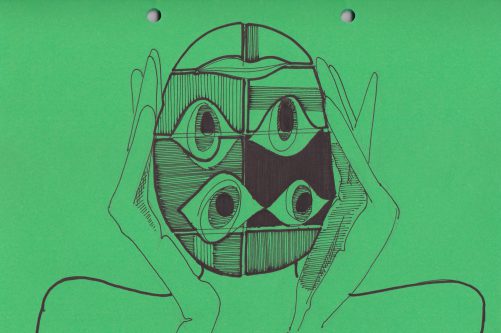
6) Has anyone, or anything, in particular inspired your creativity and artistic passion?
My parents. They taught me expression and freedom and gave me space to explore or experiment or create in any way I wanted, from the very start. If you fear a medium or an expression, that inhibits you. So from regular paints and medium to exploring leftover wood boards, to wires, to absolutely anything you find around or need to get. And to know why are you creating – for yourself, to share, to represent a cause, to sell, to make a profession, for fame. You shouldn’t have illusions about why you are involved with an activity.

7) Any advice you would like to share with aspiring artists?
I have seen a lot of people around me, even as architecture students, start sometimes with a thought that goes along the lines of “I don’t know this” or “I won’t be able to do this”. I think we need to start with a “Let me try how to do this”. And to always find your own personal narrative inside any art you intend to practice. It doesn’t come right away. Like with any field, you need to keep at it, practicing, learning new, adding, innovating. A sketch journal on you at absolutely all times works very aptly in recording things that catch your eye.
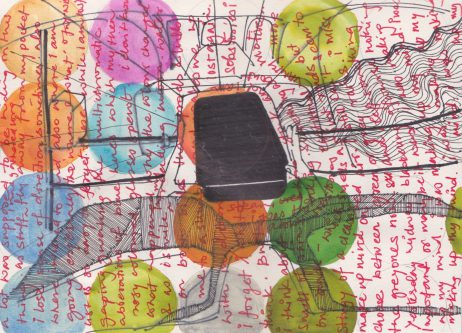
About Paperblanks: 25 years ago, we created Paperblanks to help keep book heritage alive and vital in our modern age, and to offer an inspiring space for people to express themselves. Thanks for joining us on this journey! For more about Paperblanks, go to our website at paperblanks.com.

